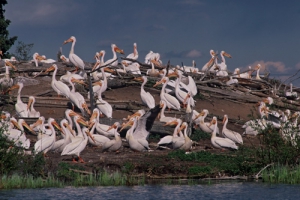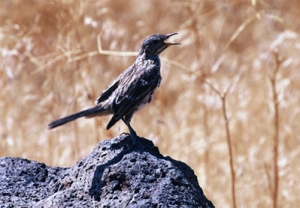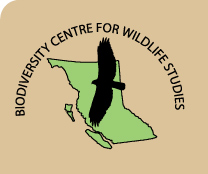Peripheral Species
Because of its location and topography, British Columbia hosts more than 1,300 species and subspecies that just enter its borders. Many of these species occur irregularly, often in response to annual environmental conditions and resources that natural fluctuate, particularly at the edge (periphery) of geographic (habitat) zones. We define peripheral taxa as those species having no more than 10% of their range in British Columbia. Some species, such as the fisher, however, are widely spread and have no more than 10% of their range in any province or territory. We do not consider these species peripheral.
Peripheral taxa in British Columbia are represented among all major taxanomic classes, including the mosses, vascular plants, butterflies, dragonflies and damselflies, fish, amphibians, reptiles, birds, and mammals.
There are two principal ways that species can be peripheral:
1) Disjunct (geographically marginal) populations
Disjunct populations occur away from their core population and often have unique attributes, both related to the natural and life history of the population. For example, disjunct populations may rely on alternate food sources, live in different types of habitats, or have different breeding chronologies that differ from core populations. A component of the life history characteristics that an animal has is defined by the genetic makeup of that population. Core populations have regular mixing of genetic material, whereas disjunct populations do not.
 Ultimately, disjunct populations have greater potential for speciation than do continuously peripheral populations, because they have no genetic mixing with other disjunct populations, or the core population. Thus, because of this genetic isolation, only time will determine if these species become distinct.
Ultimately, disjunct populations have greater potential for speciation than do continuously peripheral populations, because they have no genetic mixing with other disjunct populations, or the core population. Thus, because of this genetic isolation, only time will determine if these species become distinct.
In British Columbia, one example of a peripheral species is the American White Pelican. The breeding colony is located at White Pelican Provincial Park at Stum Lake in the Cariboo-Chilcotin region. With this population there appears to be no external mixing with individuals from parts of the core range, which at its nearest, is over 800 kms away.
2) Continuous (ecologically marginal) populations
Unless restricted to an island or some abrupt topographic feature, all species ranges have a fuzzy, ill-defined edge. From year to year, that edge expands or contracts, depending on favourability of those conditions in that year. Conservation of species at the edges of their range is difficult to assess, and is more complicated when that edge is truncated by a political boundary (i.e., provincial borders).
In British Columbia, many species and their respective populations cross these political borders and have a restricted distribution in British Columbia. Such areas occur in the South Okanagan Valley (e.g., Sage Thrasher, White-headed Woodpecker, and Pallid Bat), the Lower Mainland (e.g., Columbia Spotted Frog, Coast Mole, Hutton’s Vireo, and Trowbridge Shrew), the Peace River region (e.g., Boreal Chorus Frog, Black-throated Green Warbler, and Woodchuk), and the Tatshenshini-Alsek region (e.g., Baird’s Sandpiper, “Dall’s” Thinhorn Sheep, and Wandering Tattler).
Because of this natural distribution, but artificially defined rarity, many species occurring in these regions are provincially and federally listed. One such example, for a which a provincial recovery plan exists, is the Sage Thrasher. From the Wildlife Data Centre databases, evidence shows that this species has not changed its distribution or abundance in the last 117 years of documented records. Additionally, for that same time period, there are no more than 8 breeding sites, and annual occurrence has occurred in only 31 (26 %) of the 117 years.
 For an evaluation of peripheral species see Bunnell et al (2004). For a recent study on the implications of peripheral species and public opinion on the establishment of a proposed national park, see Preston (2004).
For an evaluation of peripheral species see Bunnell et al (2004). For a recent study on the implications of peripheral species and public opinion on the establishment of a proposed national park, see Preston (2004).
References
Bunnell, F.L., R.W., Campbell, and K.A. Squires. 2004. Conservation priorities for peripheral species; the example of British Columbia. Canadian Journal of Forest Research 34:2240-2247.
Preston, J. 2004. Conservation priorities and peripheral species in the South Okanagan: considerations for a proposed national park. Wildlife Afield 1:47-53.







